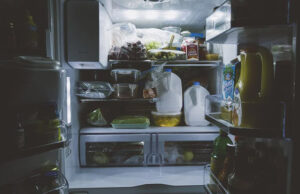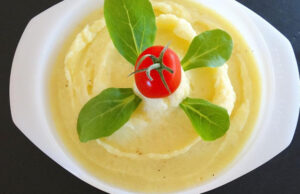Can silicone go in the oven is frequently asked by many people. We can all agree that silicone is a heat-friendly substance that works well for baking and cooking. Silicone is incredibly practical for the kitchen and lessens the chance that the aluminum in your cookie sheet and muffin tin combination will corrode.
Table of Contents
Introduction of Silicone
Silicon, also known as polysiloxane, has a murky scientific name, yet it is primarily thought of and considered to be rubber.
A synthetic elastomer (a polymer with elastic components) with qualities similar to both plastic and rubber is silicone. Silicon can be used to create solids, liquids, and rubber-like substances.
Silicone and heat-resistant synthetic rubber are used to make silicone cookware. While the rubber element in the composition keeps the bakeware’s suppleness even in harsh conditions, the silicone in the formulation gives non-reactive stability.
It’s become popular to produce silicone kitchen utensils in a variety of colors, so these products are now offered in all hues. Since the coloring pigments are present throughout the entire product, silicone bakeware is strong and can handle the heat, moisture, and demands of baking.
Is Silicon Poisonous?
Over time, silicone has been widely known for its usage in breast implants and other applications involving plastic surgery. Additionally, consumers have viewed this silicone use as risky and unreliable due to the widespread perception of these characteristics. However, that lack of safety might only be true for silicone implants that have been done haphazardly and are liquid in nature. Silicon made for use in kitchens is designed to be stable, fixed, and cured.
This is not to imply that silicone kitchen utensils are faultless and flawless.
You should be aware of the following silicon bakeware issues:
- When placing their pans on the rack, several customers complain that silicone bakeware flexes excessively in their ovens, spilling their batter or baking materials. These spills may result in an oven that smokes, a mess, or even a danger. In order to avoid the silicon bakeware from straining and leaking raw batter, you should probably use a metal tray before putting it in the oven.
- Make sure your cookie sheet or something similar is spread below them because silicone is tough to move once it’s hot. This is especially important if you’re used to turning your baked goods halfway through the procedure.
- It has also frequently been noted that if silicon bakeware is not cleaned correctly, a sticky coating can form over time, which may damage its non-sticky qualities.
About Food Grade Silicone
Food grade silicone can refer to silicone that can be blended and put into a specific mold for the baker’s subsequent use, or it can refer to lubricant that has been designed to be non-toxic and stable.
Both kinds can be consumed. Simply put, the first method will make it simpler to remove freshly baked or formed food from a mold that already exists, such as a Jello pan or chocolate mold.
The construction of a unique void is necessary for the second method of creating a personalized food-safe mold. The required shape is created in a mold pan, which is then filled with liquid silicone to cover the shape and allowed to cure.
Can Silicone Go in The Oven?
Yes, silicone bakeware can be used in the oven as the substance withstands oven temperatures of up to 428 degrees Fahrenheit (220 degrees Celsius). Silicone may be used safely for regular tasks as well as for cooking and baking. Food-grade silicone will not deteriorate or leach into foods at high oven temperatures.
Can Silicone Handles Go in The Oven?
The silicone handles can be used in the oven because they are made of the same material as silicone bakeware.
However, it is imperative to inquire “why?” More frequently, objects are removed from the oven with silicone handles. They shouldn’t be left inside the range for a significant reason.
Will Silicone Melt In the Oven?
In the oven, silicone won’t melt until the temperature reaches 500F. (260C). Given that most baked goods don’t require such high temperatures, this is good news for bakers.
Unfortunately, you will have to forgo the silicone and choose something far more durable if your recipe calls for temps above 500F. Your best options will be carbon steel, cast iron, and stainless steel.
FAQs
Is Wilton silicone oven-safe?
Oven-safe Wilton silicone products are available. They can withstand temperatures of up to 500F, making them one of many silicone bakeware items that can. Wilton is also incredibly affordable, making them a common item in many kitchens (including mine).
Can you put epicure silicone in the oven?
Fans of Epicure will appreciate that their extensive assortment of silicone products is oven-safe up to 450F. Although they offer a smaller number of items than Wilton (and many other manufacturers), they are still a solid option for bakeware because of their emphasis on healthy eating selections.
Can silicone go in the dishwasher?
Another key selling point for silicone is that it can be put in the dishwasher. Therefore, don’t be afraid to wash your silicone bakeware in the dishwasher after you’ve finished baking brownies, muffins, cakes, or any other delectable delicacy in it.
Last Words
In the kitchen, silicone bakeware has been a real game-changer. Generally speaking, it can be used in ovens up to 450°F, while others have higher or lower requirements. Whatever the case, you can have a non-stick pan that makes it easy for food to always slip right out. It is stain-free and safe for dishwashers.


